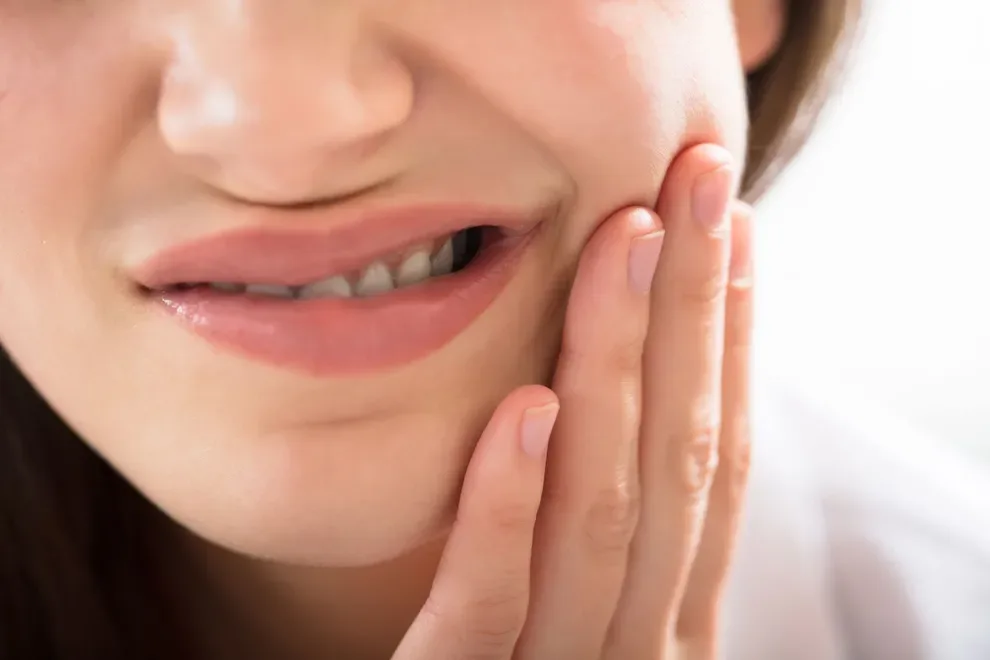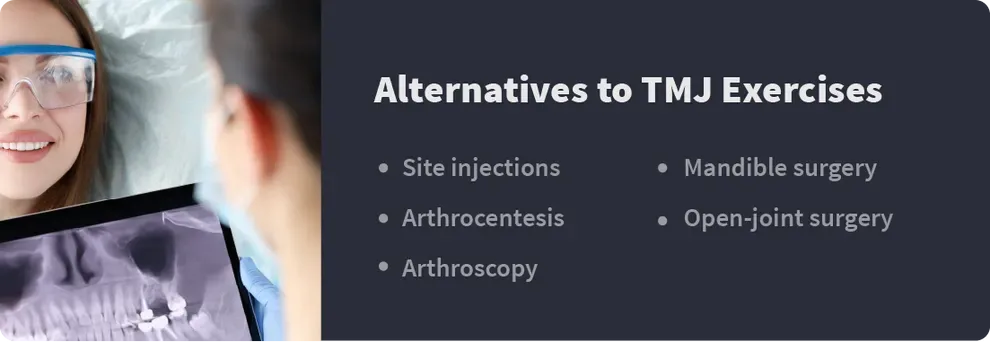TMJ Exercises - What Options Do I Have & Are They Effective?

Table of Contents
- TMJ Exercises
- Effectiveness
- Permanent Treatment Options
- References
The temporomandibular joint, or TMJ, is a particular spot located below the front of your ears where the skull and lower jaw come together. This unique joint is what allows your mandible to move whenever you chew, speak or otherwise move your mouth.
When this joint doesn’t work effectively, it can create a variety of symptoms that ranges from annoying to painful. You may experience and hear constant clicking. Or you may develop earaches, headaches or a feeling similar to a toothache. You may even feel pain or discomfort when you open and close your mouth.
TMJ exercises are often prescribed by doctors to help relieve discomfort and provide much-need relief to patients. In some cases, more permanent treatment options are recommended to help resolve the issue.
TMJ Exercises
Your dental professional may prescribe a regimen of jaw and mouth exercises to help your TMJ issues. That list of exercises depends on what exactly is wrong with your jaw joint.
For example, individuals with TMJ pain due to grinding their teeth may be given a different set of exercises to try than patients who have a dislocated disk in the area.
Here are a few common TMJ exercises you can try out at home:
Exercise 1
Close your mouth with your top and bottom teeth touching. Touch your tongue to your soft palate, holding that position for a few seconds.
Run the tip of your tongue backwards toward the soft palate. Move your tongue as far back as you can without experiencing discomfort.
Keep your tongue in place and slowly open your mouth. Stop once you feel your tongue begin to lose contact with your soft palate. Hold this position and count to five.
Repeat this process for as long as possible, or until you’ve reached the five minute mark.
Exercise 2
Stand against a wall, keeping your back and shoulders straight.
Pull your chin toward you like you’re trying to create a double-chin. You may notice a stretching feeling around your TMJ at this point.
Hold this position for about five seconds.
Repeat this procedure about five times.
Exercise 3
Start by placing your thumb firmly under your chin. Don’t press too hard, but keep consistent pressure.
Apply pressure to your chin with your thumb as you open your mouth.
Hold your mouth open for about five seconds.
Reverse the movement. Start by squeezing your chin between your fingers, which will make it more difficult to close your mouth.
Repeat about five times.
For some cases, your dentist will advise wearing a mouth guard or splint as part of your TMJ treatment which helps if you clench your jaw or grind your teeth, especially if you are grinding at night.
Are the Exercises Effective?
TMJ exercises can be effective when it comes to relieving discomfort and pain.
If your TMJ disorder is related to a problematic behavior like grinding your teeth, a combination of behavior modification and TMJ exercises may eliminate the problem.
In severe cases or when TMJ is related to a displaced or dislocated disk, exercises may not be enough to correct the problem. That’s typically when your doctor will discuss more permanent treatment solutions with you.

Permanent Treatment Options for TMJ
TMJ disorder can be treated in a variety of different ways. If specific exercises don’t provide relief when used in conjunction with over-the-counter treatments like applying hot and cold packs, your doctor may recommend a more permanent treatment option.
Permanent treatment options for TMJ may include:
Corticosteroid injections and toxin type A injections like brand-name Botox are sometimes used to relieve pain related to TMJ disorders.
Arthrocentesis is a procedure that utilizes small needles that are inserted into the joint to flush out debris and byproducts of inflammation. This procedure is considered minimally invasive and has a quick recovery time.
Arthroscopic surgery is sometimes recommended to treat more severe TMJ disorders, as it typically has fewer risk and complications than traditional open-joint surgical procedures.
A surgical procedure known as a modified condylotomy can help address TMJ issues via the mandible. This procedure is most commonly recommended to patients who have issues with their jaw locking when they move their mouth.
Open-joint surgery may be required when structural issues are the cause of TMJ disorders.
